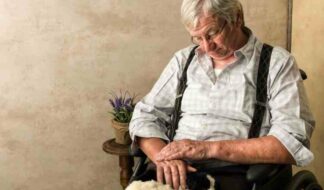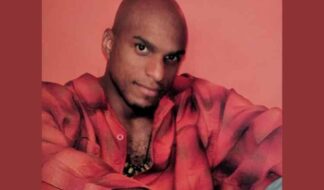"You may drink my wine. You may eat my food. You may command my servants. But you must respect my dog!"
So read the bronze plaque affixed to the door of the palatial London home of Sigmund Neuberger (1872-1911) — The Great Lafayette — the highest paid magician and quick change artist of his time.
Mostly forgotten today, he was undoubtedly as gay as a pink (vanishing) elephant.
The pampered object of The Great Lafayette's affection was Beauty, a perky terrier once given to him as a pup by fellow conjurer and admirer Harry Houdini. Beauty had her own suite of brocaded rooms, ate five course meals, and wore a diamond studded collar.
"The more I see of people, the more I love my dog," confessed TGL, who carefully avoided romantic entanglements with women, treated most people with disdain, and lived a life of sybaritic luxury on a salary of 40,000 British pounds sterling per year.
"If Beauty should die, I'm sure I shan't live much longer," predicted TGL — a prophesy that surreally came true.
According to William Goldston, 19th/20th Century historian of magic, "Lafayette was the most hated magician that ever lived. He was so intensely unpopular that he was greeted everywhere with the most utter and open contempt."
This may have been Goldston's sour grapes, as TGL was on cordial — if somewhat reserved — terms with fellow magicians Houdini, Harry Kellar, Howard Thurston, and Chung Ling Soo (aka William Robinson). There was, of course, no complaint from Beauty. She, or was it he? was TGL's inspiration.
Beauty lived like a king (or was it a queen?), chauffeured about London in TGL's silver-gray Mercedes, the radiator ornament of which was the little dog's likeness. Beauty also had his/her private railway carriage and at home dog-sized settees and porcelain baths. He fit snugly (and smugly) in the crook of TGL's velveteen-sleeved arm.
TGL was actually more of a quick change artist than a magician, and one with campy flair and exuberant panache. Audiences adored him. He usually entered center stage to a trumpet fanfare, and was dressed in a close-fitting satin costume of pastel shades. He'd shake dozens of birds from a sequined cloth, finally producing a bejeweled goat from its folds.
His magic was laced together with switcheroo routines, in which he skillfully traded identities again and again with his staff of well-disciplined (and well paid) assistants. The end of his career (and life) began May 1st, 1911 with a two-week season at the Empire Theater in Edinburgh, Scotland.
Four days before opening Beauty died of apoplexy, the result of much over feeding. TGL was grief stricken (but the show must go on). He had Beauty laid out in his hotel room, surrounded by lilies. The treasured pet was embalmed, and TGL bought side-by-side burial plots at nearby Piershill Cemetery.
On May 9, 3000 people packed the Empire Theater to see TGL. The finale that evening was called "The Lion's Bride," a popular audience pleaser, at the end of which TGL magically changed places with the lion. Tragically at that performance the scenery caught fire, and the theater was hastily evacuated.
Among the three who perished was The Great Lafayette, identified only by his many rings. He had tried to rescue his animal menagerie. His funeral was described as "one of the most extraordinary internments of modern times". There was great sorrow for all, as Beauty's coffin was opened and The Great Lafayette's ashes were placed carefully enfolded by his beloved and faithful terrier.
Topics:
Opinions









